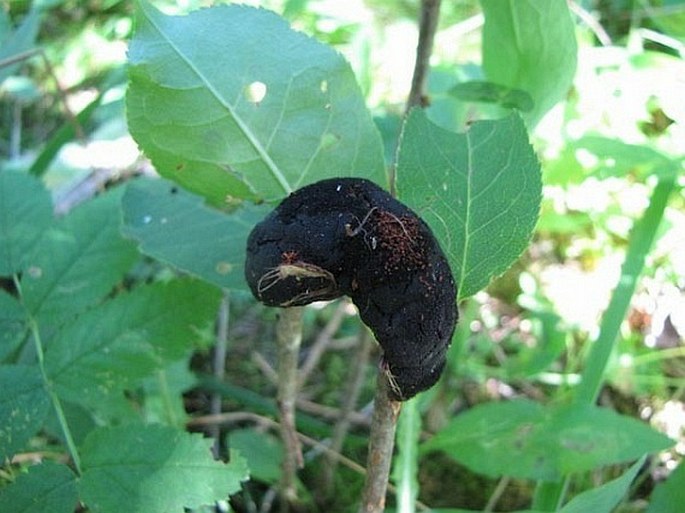Syn.: Cerasus virginiana (L.) Michx., Padus virginiana (L.) M. Roem.
Family: Rosaceae Juss.

Distribution: North American species with large area of distribution, from Atlantic to Pacific, through southern Canada and northern part of US. Absent in the north and southeast of the continent. Brought to Europe in 1665, to Czechia in 1811. It is planted in the parks and even in the woods.
Ecology: Dry, open areas, edges of aspen forests, along streams. Blooms from April to June.

Description: Deciduous shrub to small tree, 5–15 m tall. Trunk erect, crown ovoid, young bark reddish brown, smooth, old bark greyish brown, cracking. Young shoots smooth, brown-green, later grey. Leaves alternate, widely ovoid to elliptical, 4–12 cm long, 4–8 cm wide, petioles 5–20 mm, margins finely toothed. Inflorescence is a cylindrical raceme, 5–15 cm long, 10–35-flowered, 10–15 mm across, white, pentamerous, stamens about 20, pistil 1. Fruit is a berry-like drupe, reddish purple to purplish black, 6–8 mm across, edible.
Use: Although sour to the taste, fruit makes delicious jams and jellies. Native tribes added ground chokecherries, complete with pits, to pemmican and fish.
Note: This species is used in cultivation as a decorative tree in several cultivars. In North America the most popular is ‘Schubert’ cultivar with red leaves.



This species, as all Prunus in North America, is susceptible to Black Knot, which is a fungus Apiosporina morbosa, easily transmitted, hard to contain.

These images were taken in Canada, Alberta, Calgary, South Glenmore Park and Irrigation Canal (by Karel Bergmann, 2013), and Canada, Alberta, Fort Macleod, Head-Smashed-In Buffalo Jump (by Vít Grulich, July 28, 2007).


